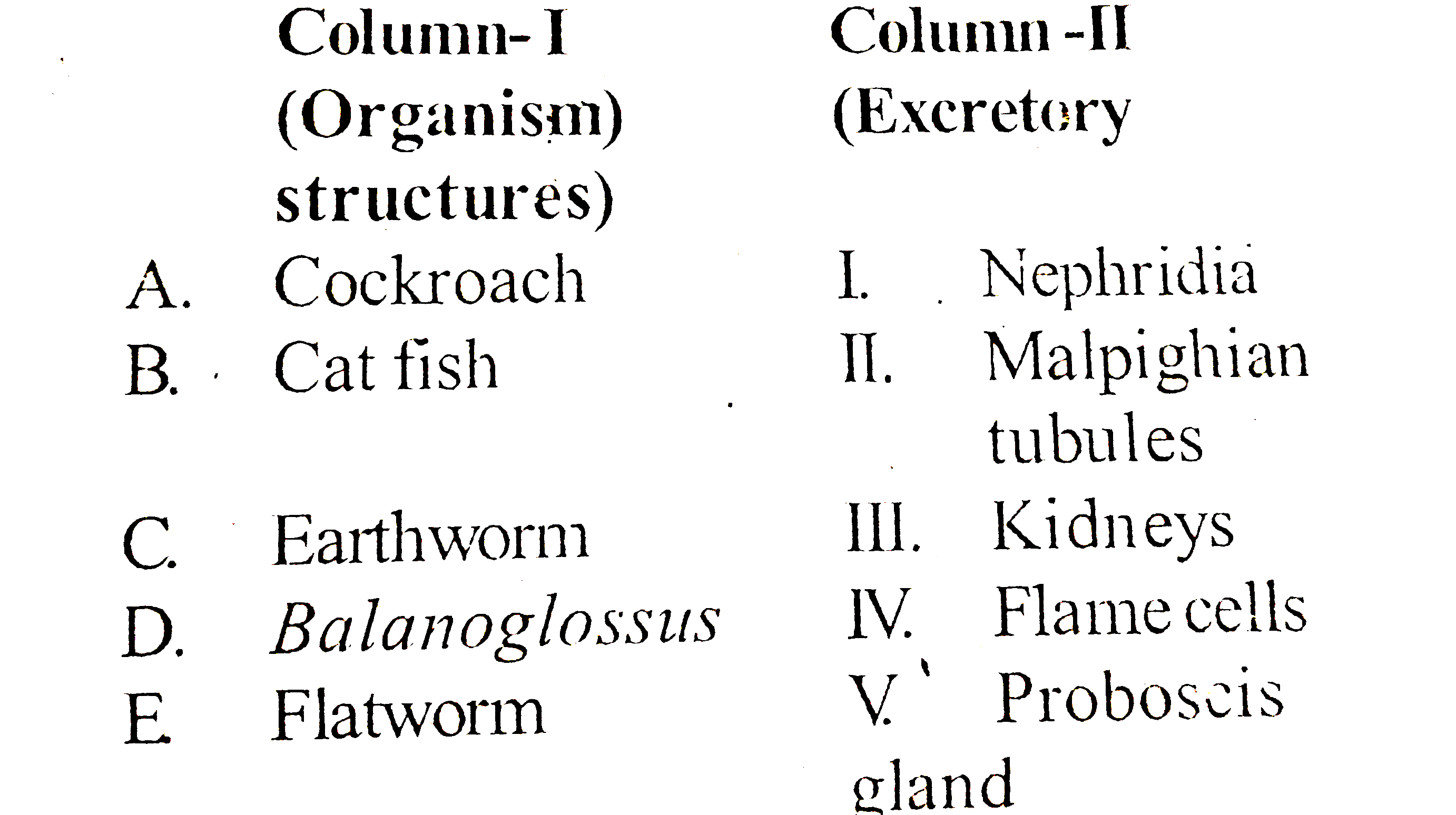Flame cells (solenocytes) are excretory structures of
Annelida
Arthropoda
Flat worms
Crustaceans (prawn)
The correct Answer is:C
Step-by-Step Solution:
1. Understanding Flame Cells (Solenocytes):
- Flame cells, also known as solenocytes, are specialized excretory structures that function similarly to kidneys. They help in the removal of waste materials from the organism.
2. Structure of Flame Cells:
- Each flame cell has a nucleated cell body, which means it contains a nucleus.
- It features a cup-shaped projection that has flagella covering its inner surface.
- The movement of these flagella resembles the flickering of a flame, which is how the name "flame cell" is derived.
3. Identifying the Organisms with Flame Cells:
- To determine which organisms possess flame cells, we need to examine the excretory systems of various animal groups:
- Annelida: Their excretory system consists of nephridia, not flame cells.
- Arthropoda: They have an excretory system made up of Malpighian tubules, which do not include flame cells.
- Flatworms: The excretory system of flatworms is indeed composed of flame cells, making this option a potential correct answer.
- Crustaceans: Their excretory system consists of antennal glands and maxillary glands, which do not involve flame cells.
4. Conclusion:
- After analyzing the excretory systems of the mentioned groups, it is clear that flame cells (solenocytes) are excretory structures found in flatworms.
Final Answer:
Flame cells (solenocytes) are excretory structures of flatworms.
---
- Flame cells, also known as solenocytes, are specialized excretory structures that function similarly to kidneys. They help in the removal of waste materials from the organism.
- Each flame cell has a nucleated cell body, which means it contains a nucleus.
- It features a cup-shaped projection that has flagella covering its inner surface.
- The movement of these flagella resembles the flickering of a flame, which is how the name "flame cell" is derived.
- To determine which organisms possess flame cells, we need to examine the excretory systems of various animal groups:
- Annelida: Their excretory system consists of nephridia, not flame cells.
- Arthropoda: They have an excretory system made up of Malpighian tubules, which do not include flame cells.
- Flatworms: The excretory system of flatworms is indeed composed of flame cells, making this option a potential correct answer.
- Crustaceans: Their excretory system consists of antennal glands and maxillary glands, which do not involve flame cells.
- After analyzing the excretory systems of the mentioned groups, it is clear that flame cells (solenocytes) are excretory structures found in flatworms.
Flame cells (solenocytes) are excretory structures of flatworms.
Topper's Solved these Questions
- EXCERETORY PRODUCTS AND THEIR ELIMINATIONBOOK - CENGAGE BIOLOGY ENGLISHCHAPTER - EXCERETORY PRODUCTS AND THEIR ELIMINATIONEXERCISE - ASSERTION-REASONING QUESTIONS
10 Videos
- EXCERETORY PRODUCTS AND THEIR ELIMINATIONBOOK - CENGAGE BIOLOGY ENGLISHCHAPTER - EXCERETORY PRODUCTS AND THEIR ELIMINATIONEXERCISE - ARCHIVES
22 Videos
- DIGESTION AND ABSORPTION BOOK - CENGAGE BIOLOGY ENGLISHCHAPTER - DIGESTION AND ABSORPTION EXERCISE - ARCHIVES
25 Videos
- LOCOMOTION AND MOVEMENTBOOK - CENGAGE BIOLOGY ENGLISHCHAPTER - LOCOMOTION AND MOVEMENTEXERCISE - ARCHIVES
12 Videos
Similar Questions
Excretory structures of rotifers
View SolutionName the excretory structure of prawn.
View SolutionSolenocytes/ flame cells are excretory structures of
View SolutionName the excretory structures of earthworm.
View SolutionConsider the following statements
A. Flame cells are excretory structures in flatworms
B. Green glands are excretory organs in annelids
C. Columns of Bertini are the conical projections of renal pelvis into medulla between the renal pyramids
View SolutionWhat is the excretory structure in Amoeba?
View Solutionflame cells are excretory organs of
View SolutionMalpighian tubules are the excretory structures of ____________
View SolutionExcretory structures of rotifers are
View SolutionColumn-I contains organisms and column-II contains their excretory structures. Choose the correct match form the options given below.

View Solution
